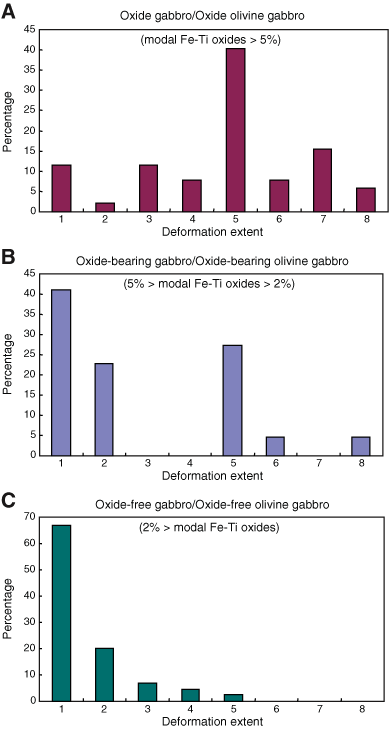
Figure F47. A. Deformation extents (textural category classes) for (A) oxide gabbro and oxide olivine gabbro, oxide > 5%, (B) oxide-bearing gabbro and oxide-bearing olivine gabbro, oxide 2%–5%, and (C) oxide-free (>2% and typical >>>2%–0%) gabbro and olivine gabbro. Based on the results from microstructural analysis of 147 thin sections from different depth intervals of Hole 1105A, the deformation extent is plotted vs. percentage (frequency) of samples in oxide gabbro and oxide olivine gabbro lithologies. In A the majority of the samples show a deformation extent of 5 and above. In B deformation extents for oxide-bearing gabbro and oxide-bearing olivine gabbro show values <3 in some samples, and some samples show deformation extent values >5, with an intermediate average. In general, a bimodal distribution of samples vs. deformation extent is observed for oxide-bearing lithologies. C. Deformation extents for oxide-free gabbro and oxide-free olivine gabbro with no oxides or small amounts of interstitial oxide (<<2%), the majority of the samples show a deformation extent of 4 and below, and the majority of samples are undeformed or only mildly deformed. The diagram suggests that abundant oxide minerals may present a weak rheology that can localize deformation. Whether the oxides indicate melt involvement and hypersolidus flow is difficult to determine from the subsolidus textures that now remain.


![]()